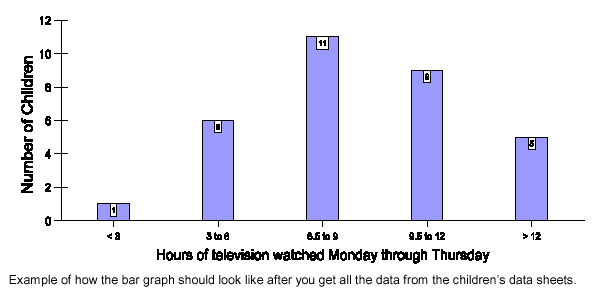BACKGROUND:
If a subject interests
students, they can usually think of many questions they would like answered.
The first step in scientific work is to narrow the range of investigation so
the question is answered by an experiment showing results in a reasonable
period of time. "Why can't Johnny read?" and "Why don't I seem
to have time to do everything I want to do?" are not good experimental
questions. "How much television do second graders watch LAB the
week?" is much better because it is a measurable quantity. The scientific
method can be broken down into 3 steps.
(1) Guess what is going to happen;
(2) test your guess; and
(3) record your results.
Do your results match your guess? If
not, why not? Real scientists often learn more when experiments do not turn
out as expected. They make a new guess and test it. It is important to remind
students that there is no one perfect answer. A hypothesis is only a best
guess. This guessing, testing and retesting is the most important thing for
children to learn when proposing a science project.
PROCEDURE:
- Explain to students that
over the next week they will become scientists testing the question, "How
much television do second graders watch LAB the week?Ē Before scientists
can answer a question they must first guess what they think will be the
outcome. This guess is called a hypothesis. Ask students
to decide how many hours of television they usually watch from Monday through
Thursday. You will get all sorts of numbers. Pick one in the
middle and see if the class agrees by taking a vote. State their
hypothesis formally: "The children in our class watch about X hours of
television from Monday through Thursday."
- Inform the students that a scientist
must now test their hypothesis (guess). For this experiment a survey
is sent home on Monday with each child. Each student writes down
how many hours of television he or she watches on Monday, Tuesday, Wednesday,
and Thursday. The surveys should be returned on Friday. Ask
the children to use whole hours or half hours. If they only watch
a fraction of a program ask them to round the time to the nearest half
or whole hour. They can ask their parents to help them with this.
If you send home a weekly letter to parents you may want to include this
lab into the letter. In this way the parents can remind the children
to write in their times accurately.
- Reinforce the following points before
they start the survey. The time must be accurately recorded and there must
be a number for each day. The children should follow their normal
viewing habits as much as possible. The idea is to get a real picture
of how they spend their time, not to see if they can fudge the data to
come closer to the time they guessed. Real scientist do not "fudge"
data.
- On Friday, each survey sheet should
be checked to ensure that there are entries for all four days. The
total will change if a child forgets to write the hours down one day.
If there are blanks but the child thinks he/she can remember what programs
were watched, fill in the data where missing.
- Model for the children how to add
up the total number of hours watched LAB the four days.
- Allow them time to add their own
numbers. Ask them to have the student next to them check their work.
- Ask the children to decide into which
of the following categories their hours fit. List the categories
on the board: 0 to 3 hour, 3 ½ to 6 hours, 6 ½ to 9 hours,
9 ½ to 12 hours.
- Total the number of children in each category
and make a bar graph.
- Report the range of results (the lowest
number of hours watched and the highest number of hours watched).
Look at the graph and determine the most common number of hours watched.
- Look at the children's estimate again.
Discuss how their estimate compares with the results?

- You may want to summarize the results
and include them in a parent letter. Most parents donít realize how
much television their children watch. You may want to include alternate
activities like reading a book or taking a nature walk to help parents
spend more time with their children.